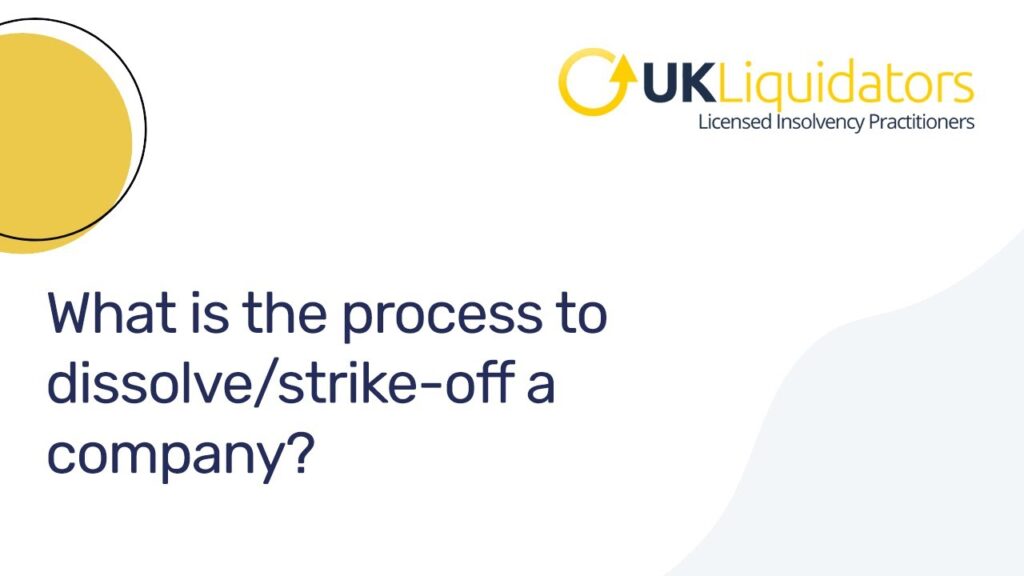Comprehensive Guide to First Gazette Notice for Compulsory Strike Off
Wiki Article
A Comprehensive Guide to the Compulsory Strike Off Treatment in Corporate Administration
Browsing the intricate landscape of business governance calls for a keen understanding of the procedures that govern the dissolution of entities. The mandatory strike off procedure, an important aspect in business administration, acts as a system to implement conformity and maintain the honesty of business atmosphere. As businesses progress and situations adjustment, the requirement to strike off a business might occur for different reasons. Discovering the intricacies of this process, consisting of the lawful effects, procedural actions, and post-strike off factors to consider, supplies very useful understandings for stakeholders seeking to navigate the complexities of business governance.
Factors for Compulsory Strike Off
What conditions cause the requirement of a required strike off in business administration? There are numerous vital reasons that might trigger the initiation of a compulsory strike off treatment for a business. One typical scenario is when a firm stops working to abide with its statutory obligations, such as submitting annual returns or economic statements to the relevant authorities. Non-compliance with regulatory needs can raise concerns regarding the firm's procedures and economic health, causing the choice to strike off the company from the register.Additionally, business that have actually ceased trading or are no much longer performing any kind of business activities might also face required strike off. This might be as a result of bankruptcy, mergers, or simply a decision to wind up the company. In such cases, maintaining the company on the register would certainly serve no function and can possibly produce confusion amongst stakeholders.
Inevitably, the requirement of a mandatory strike off in corporate administration arises when a company is no longer operating according to the legislation or has actually come to be defunct, necessitating its removal from the official documents.
Lawful Ramifications and Dangers
Offered the scenarios that prompt an obligatory strike off in business governance, it is vital to understand the legal implications and risks related to such activities. When a firm is struck off the official register, it stops to exist as a lawful entity. This can have major consequences for shareholders, creditors, and supervisors. Supervisors may encounter personal liability for business debts incurred after the dissolution, exposing their assets to potential seizure. Investors shed their investment in the business, and creditors may find it testing to recoup financial debts owed to them.Furthermore, there are lawful effects for people involved in the management of a business that has been forcibly struck off. They may be invalidated from functioning as supervisors in the future, face fines, or perhaps imprisonment if misconduct or fraudulent activities are uncovered. In addition, the reputational damages from a compulsory strike off can have lasting results on people and their capability to take part in future company ventures. Understanding these lawful ramifications and risks is critical for all stakeholders associated with the corporate administration process to ensure and navigate possible pitfalls compliance with the regulation.
Action In the Strike Off Process
Launching the compulsory strike off procedure in company governance includes a collection of recommended steps laid out by governing authorities. The very first step commonly calls for the business to submit an official application or notice to the pertinent federal government agency or registrar signaling its intent to be struck off the main register. Ultimately, the firm is often called for to resolve any outstanding responsibilities, debts, or taxes to guarantee conformity with regulative demands.When the initial documents is submitted and financial responsibilities are satisfied, the governing body will certainly release a notification in the main gazette or a similar magazine to educate stakeholders concerning the impending strike off - first gazette notice for compulsory strike-off. This notice serves as a last opportunity for any type of interested parties to increase objections or existing valid factors why the firm must not be dissolved
Adhering to the magazine of the notice, the regulatory authority will certainly proceed with the strike off procedure if no substantial arguments or barriers emerge. The firm will certainly after that be formally liquified, and its name will certainly be removed from the register, efficiently marking the conclusion of the obligatory strike off procedure in corporate governance.
Documents Needed for Strike Off
In conformity with regulative standards, certain documents needs to be offered to facilitate the strike off process in business administration. Furthermore, monetary statements, such as the firm's newest equilibrium sheet, need to be consisted of to ensure that all economic responsibilities have been worked out prior to launching the strike off procedure. It is crucial to guarantee that all the requisite paperwork is carefully prepared and submitted in accordance with the recommended standards to accelerate the strike off procedure properly.Post-Strike Off Commitments and Factors To Consider
Following the conclusion of the essential documents for strike off, attention shifts to the post-strike off commitments and considerations that are vital in the company administration process. When a business has been struck off the register, it is essential to make certain that all remaining possessions are taken care of suitably. This consists of distributing any staying funds among investors and clearing up any arrearages or obligations. In addition, company supervisors have to guarantee that all tax responsibilities are met, last staff member settlements are made, and that all necessary filings are completed with appropriate regulatory bodies.
Verdict
In final thought, the compulsory strike off treatment in company administration offers as a required mechanism to remove obsolete companies from the register. Comprehending the factors, legal ramifications, steps, and documents required for strike off is important for conformity with regulative needs. It is necessary for companies to fulfill their post-strike off obligations and consider the implications of this process in order to keep excellent standing and prevent possible dangers.
There are a number of first gazette notice for compulsory strike-off key reasons that may trigger the initiation of a required strike off treatment for a company (compulsory strike off). Non-compliance with regulative demands can increase issues about the business's operations and economic health and wellness, leading to the decision to strike off the business from the register

Report this wiki page